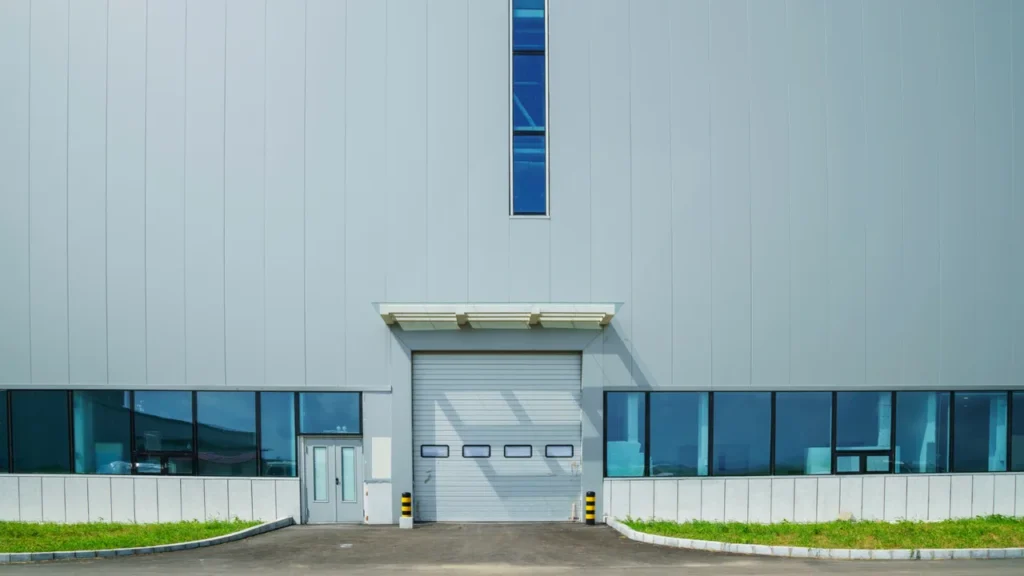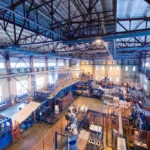In today’s fast-paced logistics sector, efficiency is no longer optional—it is the core requirement that defines operational success. From increasing storage density to streamlining inbound and outbound workflows, logistics companies depend on building systems that can adapt to constant demand fluctuations. In this environment, a steel structure warehouse has emerged as the most efficient, durable, and scalable solution for modern supply chain operations.
Unlike traditional concrete buildings, steel warehouses provide wider spans, faster construction, and improved adaptability for automation systems. With global logistics shifting toward speed, responsiveness, and smart infrastructure, steel structures have become a strategic asset that transforms warehouse performance end-to-end.
Why Steel Structure Warehouse Is Ideal for Logistics Operations
Faster Construction and Deployment
The logistics industry operates on extremely tight timelines—delays in facility readiness can mean missed delivery windows and operational losses. A steel structure warehouse cuts down construction time significantly because components are pre-engineered, prefabricated, and delivered ready for installation. The assembly requires fewer workers and minimal wet work, allowing logistics companies to expand capacity quickly and start operations sooner.
This accelerated deployment is especially valuable for e-commerce brands, distribution centers, seasonal storage hubs, and regional fulfillment centers that frequently expand to support demand surges.
Strength, Durability, and Long-Span Space Efficiency
One of the biggest advantages of a steel structure warehouse is its ability to achieve long clear spans without internal columns. This open layout enhances maneuverability for forklifts, pallet trucks, and automated guided vehicles (AGVs), while maximizing storage capacity for pallet racking systems.
- Uninterrupted 20–60m clear spans
- High load-bearing capacity for heavy goods
- Resistant to corrosion, wind, and harsh environments
These structural benefits allow logistics operators to execute efficient layouts for fast-moving goods, bulky items, and large equipment—all while maintaining structural reliability for long-term operations.
Cost-Efficiency Over the Building Lifecycle
Beyond construction savings, a steel structure warehouse minimizes operational expenses through low maintenance requirements and long material lifespan. Steel is resistant to pests, rot, humidity, and temperature fluctuations, reducing repair frequency and ensuring stable structural performance for decades.
When calculated over its total lifecycle, steel buildings offer one of the most cost-effective solutions for logistics enterprises looking to optimize investment.
Enhancing Supply Chain Efficiency with Steel Structure Warehouses
Streamlined Internal Layout for Faster Operations
A steel structure warehouse supports flexible design, enabling logistics planners to design optimized flows for inbound receiving, storage, sorting, and outbound loading. With minimal column interference, companies can place racking systems, sorting belts, and material-handling equipment exactly where they improve operational speed.
This freedom to configure layouts reduces travel distance, minimizes bottlenecks, and enables faster picking and packing processes—directly improving supply chain efficiency.
Integration With Automated Systems
Automation is one of the defining trends in modern logistics, and steel warehouses are built to support advanced robotics and automated systems. The structure can be engineered to accommodate dynamic loads from conveyors, automated storage systems, and multi-level mezzanines.
Examples of compatible automated solutions include:
- Automated Guided Vehicles (AGV)
- Conveyor and sorting systems
- Vertical storage lifts
- Robotic picking arms
- Mezzanine robotic floors
The adaptability of steel structures allows companies to scale automation step-by-step without requiring major reconstruction.
Vertical Space Utilization & Mezzanine Optimization
As land prices continue to rise, vertical optimization becomes a crucial strategy. A steel structure warehouse can support multi-tier mezzanine floors, allowing operators to significantly increase cubic storage volume without expanding horizontally.
Mezzanine structures are commonly used for:
- Packing and sorting platforms
- Lightweight product storage
- Office or supervisory rooms
- Inventory segregation zones
This vertical approach strengthens supply chain efficiency while maximizing land usage—a key benefit in dense industrial zones.
Role of Steel Structure Warehouses in Cold Storage Logistics

Thermal Stability and Insulation Compatibility
Cold chain logistics demands strict temperature control, and steel buildings are ideal for integrating high-performance insulated panels such as PU or PIR sandwich systems. A steel structure warehouse provides airtight assembly and stable thermal behavior, which reduces energy leakage in environments requiring freezing or chilling conditions.
Energy Efficiency Considerations
Cold storage facilities consume significant energy for refrigeration. Steel structures support efficient HVAC layouts, energy-saving insulation, and vapor-tight sealing. Combined with modern ventilation design, these features reduce cooling costs and ensure long-term temperature consistency.
Cold Chain Applications
- Frozen food storage
- Meat and poultry facilities
- Seafood and fish storage
- Pharmaceutical and biomedical logistics
These applications rely heavily on consistent performance, making steel building systems the preferred choice for large-scale cold storage operations.
Scalability and Flexibility for Future Logistics Demand
Quick Expansion Capabilities
As logistics networks grow, companies must expand warehouse capacity rapidly without interrupting operations. A steel structure warehouse can be extended easily by adding structural modules, roof extensions, or additional bays. The bolt-connected frame allows for clean, fast modification without the destructive work required in concrete buildings.
Adaptable to Environmental Challenges
Steel structures are engineered to withstand diverse climate conditions, from typhoons to heavy snow. The material choices—such as Q355B, S355JR, and ASTM A36—allow the building to meet different regional requirements. This adaptability ensures the warehouse remains compliant with environmental and safety codes globally.
Multi-Purpose Logistics Zones
A steel structure warehouse can be customized for various logistics operations, such as:
- Sorting and distribution center
- Transshipment hubs
- Import/export consolidation
- Cross-docking facilities
- Reverse logistics zones
This multi-functionality makes steel warehouses a long-term strategic asset for any logistics network.
Safety, Compliance, and Structural Standards
Fire Protection and Material Treatment
Safety is a core priority in logistics infrastructure. Steel warehouses can be protected using fire-resistant coatings, intumescent paint, and compartmentalized layout designs. These safety measures provide better protection for high-value goods, equipment, and workers.
International Codes and Certifications
A steel structure warehouse complies with globally recognized standards, including:
- GB Standards (China)
- Eurocode (Europe)
- AISC (USA)
Compliance ensures structural integrity, safety, and compatibility for multinational logistics companies operating across borders.
Sustainability Advantages in Steel Structure Warehousing
Recyclability and Low-Waste Fabrication
Steel is 100% recyclable, making it one of the most environmentally friendly construction materials. The prefabrication process minimizes waste, reduces pollution, and supports green building strategies for responsible supply chain management.
Energy Optimization for Logistics Centers
Steel structure designs allow the integration of solar panels, natural ventilation systems, energy-efficient lighting, and skylights. These features reduce long-term energy usage while maintaining optimal warehouse conditions.
Real-World Applications and Industry Examples
The versatility of steel structure warehouses can be seen across multiple sectors:
- E-commerce fulfillment centers – rapid turnover, robotic integration, racks, conveyors
- 3PL operators – multi-client storage, flexible layouts
- FMCG distribution – temperature-control zones, high-density pallet systems
- Cold chain logistics – refrigeration-ready steel insulation systems
- Manufacturing logistics – raw material hubs, production line feeding storage
Each industry benefits from steel’s speed, durability, and adaptability.
Choosing the Right Steel Structure Warehouse Manufacturer
Key Evaluation Criteria
To ensure long-term performance, companies should evaluate the following:
- Engineering expertise and design capability
- Factory capacity and quality control
- Customization and flexibility
- Experience with logistics-specific projects
- Ability to support multi-phase expansion
A reliable manufacturer ensures the structure meets operational needs, reduces risk, and improves supply chain efficiency.
Importance of Working With Experienced Engineering Teams
An experienced engineering team understands logistics workflows, automated systems, and building requirements. Their knowledge ensures the warehouse layout, structural design, and equipment loads align with actual daily operations, not just architectural concepts.
Conclusion
A steel structure warehouse represents the next stage of innovation in logistics infrastructure. Its advantages—speed of construction, strength, adaptability, and compatibility with modern automation—make it the most efficient option for optimizing supply chain performance. Whether for cold storage, e-commerce, or large-scale distribution, steel warehouses deliver reliability and future-proof capacity for logistics operations worldwide.



